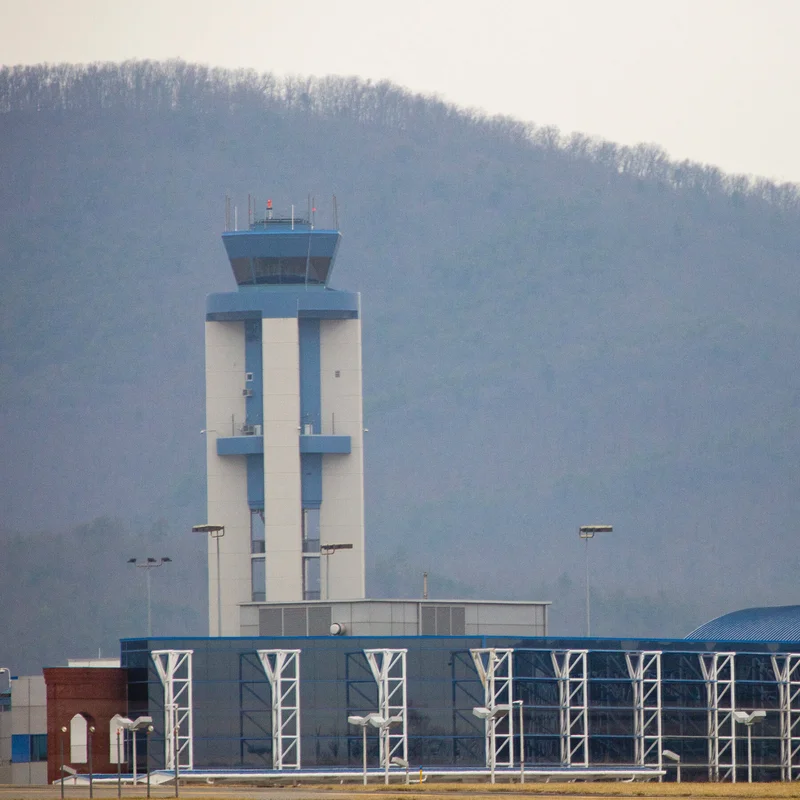A commercial jet carrying 53 people safely came to a stop after skidding off a rain-slicked runway at Roanoke-Blacksburg Regional Airport in Virginia on Wednesday night—thanks to an engineered safety feature known as an **Engineered Materials Arrestor System (EMAS)**. No injuries were reported, and aviation experts are calling the incident a textbook example of how modern runway safety infrastructure can prevent disaster .
What Happened in Roanoke?
CommuteAir Flight 4339, operating as United Express, was arriving from Washington Dulles International Airport when it overshot the 5,800-foot secondary runway during heavy rain around 9 p.m. The Embraer ERJ-145 jet veered into the EMAS bed—a specially designed crushable concrete zone at the runway’s end—slowing to a halt without flipping or catching fire .
✈️ Key Facts About the Incident
- Aircraft: Embraer ERJ-145 (regional jet)
- Passengers & Crew: 50 passengers + 3 crew
- Weather: Heavy rain at time of landing
- Safety System: EMAS bed installed in 2018
- Outcome: Zero injuries; aircraft undamaged beyond minor undercarriage wear
How EMAS Works: A Life-Saving Innovation
EMAS beds are made of lightweight, crushable cellular concrete that collapses under the weight of an aircraft, creating resistance that safely decelerates planes that overrun runways. Unlike traditional gravel or dirt safety zones—which require hundreds of extra feet—EMAS can stop a jet in as little as **200–300 feet**.
EMAS vs. Traditional Runway Safety Areas
| Feature | Traditional Safety Area | EMAS Bed |
|---|---|---|
| Space Required | 1,000+ feet of clear land | 200–300 feet |
| Effectiveness in Wet Conditions | Moderate (mud/gravel can reduce traction) | High (consistent performance regardless of weather) |
| Installation Cost | Low (if land is available) | $1M–$5M per installation |
| Airports Using EMAS (U.S.) | N/A | Over 100, including JFK, LGA, and Roanoke |
Why Roanoke’s EMAS Matters
Roanoke-Blacksburg Regional Airport sits in a mountainous region with limited space for runway extensions. The FAA funded the EMAS installation in 2018 precisely because traditional safety zones weren’t feasible. “This is why we invest in these systems,” said Jason Kadah, a CommuteAir spokesperson. “They turn potential tragedies into non-events” .
FAA Data: Since 2003, EMAS has safely stopped **14 aircraft** in the U.S., saving an estimated 300+ lives.
National Push for More EMAS Installations
The FAA’s Runway Safety Initiative has prioritized EMAS at airports where terrain, urban development, or water bodies prevent standard safety zones. As of 2025, **112 U.S. airports** have EMAS beds—up from just 35 in 2010 .
“This incident in Virginia proves EMAS isn’t just engineering—it’s peace of mind,” said retired NTSB investigator Deborah Hersman.
What’s Next for Flight 4339?
The aircraft will undergo a full inspection before returning to service. Passengers were bused to the terminal and rebooked on alternate flights. The runway reopened by Thursday morning.
For more on aviation safety innovations, explore our guide on how airports prevent runway disasters.




